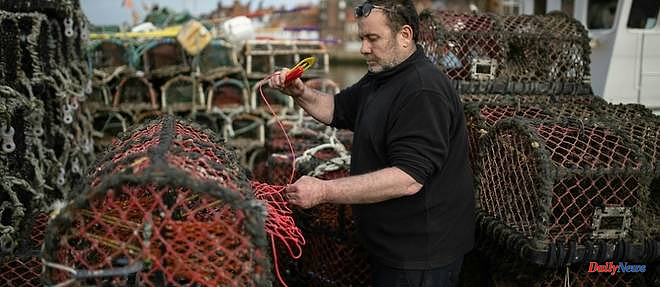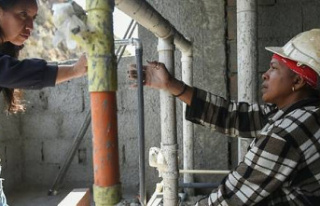Tossed about by the artificial eddies in large white plastic tanks, the tiny lobsters are safe from predators. In a few weeks, they will leave the small shed in the English port of Whitby for the open sea, as part of a project to preserve the resource.
Located in the northeast of England, Whitby is the third European port for lobster fishing: 100,000 of these crustaceans are landed there each year and the sector supports 150 people locally. Joe Redfern, who runs the Whitby Lobster Hatchery, hopes to eventually release as many each year.
"We want the marine environment to be protected and the lobster populations to be preserved for the future," the 31-year-old biology graduate, who himself was a fisherman, told AFP.
Whitby was once a hotspot for whitefish fishing. But everything collapsed mainly as a result of overfishing, but also of global warming.
In the 1990s, there were about 30 large fishing boats in Whitby, says Joe Redfern. But in 2005, "there was only one left".
The vessels had to follow the fish and move to the Scottish ports of Peterhead and Aberdeen, further north, Jonathan Parkin, a 43-year-old fisherman, told AFP, "The guys who didn't want to leave had to convert back into crustaceans".
Witness the stacks of lockers on the quays of the port, dominated on the heights by the abbey of the city, a Benedictine monastery which at the end of the 19th century inspired the Irishman Bram Stoker, author of Dracula.
Fishermen have also been hit by massive crustacean mortality in 2021 and 2022, the origin of which is not clearly identified, but which according to an official report could have been caused by a new pathogen present in seawater.
The locals, helped by academics, are leaning towards a toxin that would be released by the sediments, according to Joe Redfern. Experts carried out at the request of the authorities considered such a hypothesis "very improbable".
If the design of the project, which began two years ago, began before this carnage, Joe Redfern hopes that his hatchery can help "bring back hope" among fishermen and "show that something can be done for start rebuilding".
The project consists of taking at sea, thanks to special derogations, female lobsters carrying thousands of eggs, so that they can hatch in safety.
For larvae, the seabed is a merciless universe: the survival rate for lobsters is one in 20,000, or 0.005%. By letting them grow in a protected universe, the hatchery increases their chances unexpectedly, hoping to reach a rate of 20 to 30%.
From vat to vat as they develop, they are fed, pampered, and separated in special tanks at the stage where they risk devouring each other. After two to three months, they will be ready for the sea.
“Obviously when we release them, they will not all survive, but we will have protected them when they are at the larva stage”, the most perilous, explains Joe Redfern.
The project needed to raise more than 100,000 pounds sterling (113,000 euros) to start, he explains. He even offers on his site to sponsor a lobster and follow it until it is reintroduced at sea.
The idea of using the process, already implemented for example in Cornwall (south-west), came from the fishing community of Whitby. According to Joe Redfern, it is about "seeing what we can do to give something back to the oceans" by protecting the natural resource and the livelihood of fishermen.
"It's hugely, hugely important," says fisherman Jonathan Parkin, involved in the project. "We release next future generations of lobsters for the next generations of fishermen".
07/03/2023 08:17:07 - Whitby (Royaume-Uni) (AFP) - © 2023 AFP












